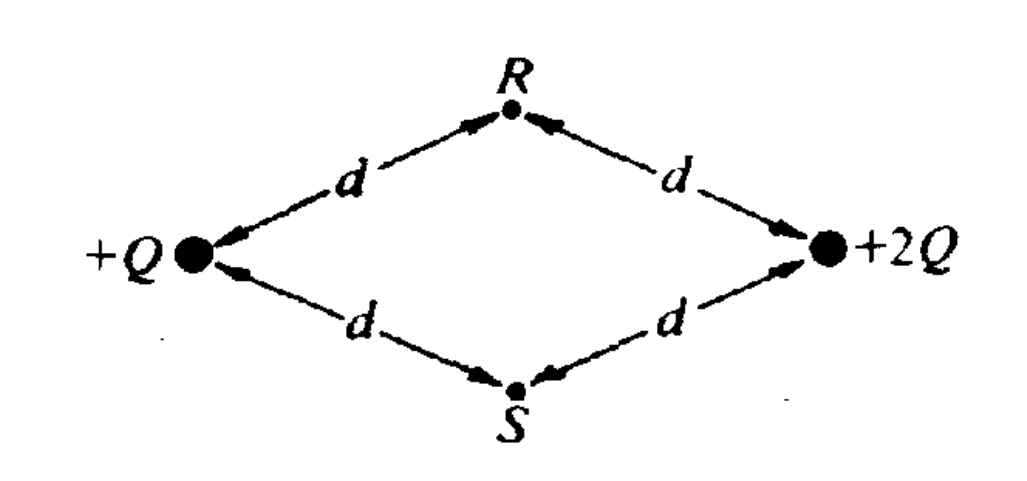Question
Which of the following charges is NOT possible?
(A) \(4.8\times10^{-19}C\)
(B) \(4.8\times10^{-18}C\)
(C) \(4.8\times10^{-20}C\)
(D) \(-4.8\times10^{-19}C\)
▶️Answer/Explanation
Ans:(C)
Charge is quantized (comes in integer multiples only) in units of \(\pm1.6\times10^{-19}C\).
Question
One joule of work is needed to move one coulomb of charge from one point to another with no change in velocity. Which of the following is true between the two points?
(A) The current is one ampere.
(B) The potential difference is one volt.
(C) The electric field strength is one newton per coulomb.
(D) The electric field strength is one joule per electron.
▶️Answer/Explanation
Ans:B
Solution: W = qV
Question
Which of the following correctly describes an electron moving from point A to point B in the situation above? Assume the two regions of charge are identical in magnitude and only different in sign.
(A) The electron moves with increasing speed and increasing acceleration and loses potential energy.
(B) The electron moves with increasing speed and constant acceleration and loses potential energy.
(C) The electron moves with increasing speed and increasing acceleration and gains potential energy.
(D) The electron moves with decreasing speed and decreasing acceleration and gains potential energy.
▶️Answer/Explanation
Ans:B
In the diagram, the electron, which has a negative charge, will move from a region of concentrated negative charge to a location of concentrated positive charge. Moving from negative to positive is something a negative charge will do naturally, and natural motion always causes a loss of potential energy. This eliminates (C) and (D).
Acceleration in this case will be constant. At the beginning of its movement, the electron will be primarily pushed away by the negative charges and only gently pulled on by the positive charges. As it travels, the balance of these two forces will trade off, meaning that as the electron approaches point B, it will be primarily pulled by the positive charge and only gently pushed by the negative charge. The total force on the electron, however, will be unchanged throughout, so the acceleration will be constant.
Question
Which of the following correctly describes an electron moving from point A to point B in the situation above? Assume the two regions of charge are identical in magnitude and only different in sign.
(A) The electron moves with increasing speed and increasing acceleration and loses potential energy.
(B) The electron moves with increasing speed and constant acceleration and loses potential energy.
(C) The electron moves with increasing speed and increasing acceleration and gains potential energy.
(D) The electron moves with decreasing speed and decreasing acceleration and gains potential energy.
▶️Answer/Explanation
Ans:B
In the diagram, the electron, which has a negative charge, will move from a region of concentrated negative charge to a location of concentrated positive charge. Moving from negative to positive is something a negative charge will do naturally, and natural motion always causes a loss of potential energy. This eliminates (C) and (D).
Acceleration in this case will be constant. At the beginning of its movement, the electron will be primarily pushed away by the negative charges and only gently pulled on by the positive charges. As it travels, the balance of these two forces will trade off, meaning that as the electron approaches point B, it will be primarily pulled by the positive charge and only gently pushed by the negative charge. The total force on the electron, however, will be unchanged throughout, so the acceleration will be constant.
Question
Points R and S are each the same distance d from two unequal charges, +Q and +2Q, as shown above. The work
required to move a charge –Q from point R to point S is
(A) dependent on the path taken from R to S
(B) positive
(C) zero
(D) negative
▶️Answer/Explanation
Ans:C
Solution: By symmetry VR = VS so ΔVRS = 0 and W = qΔV

